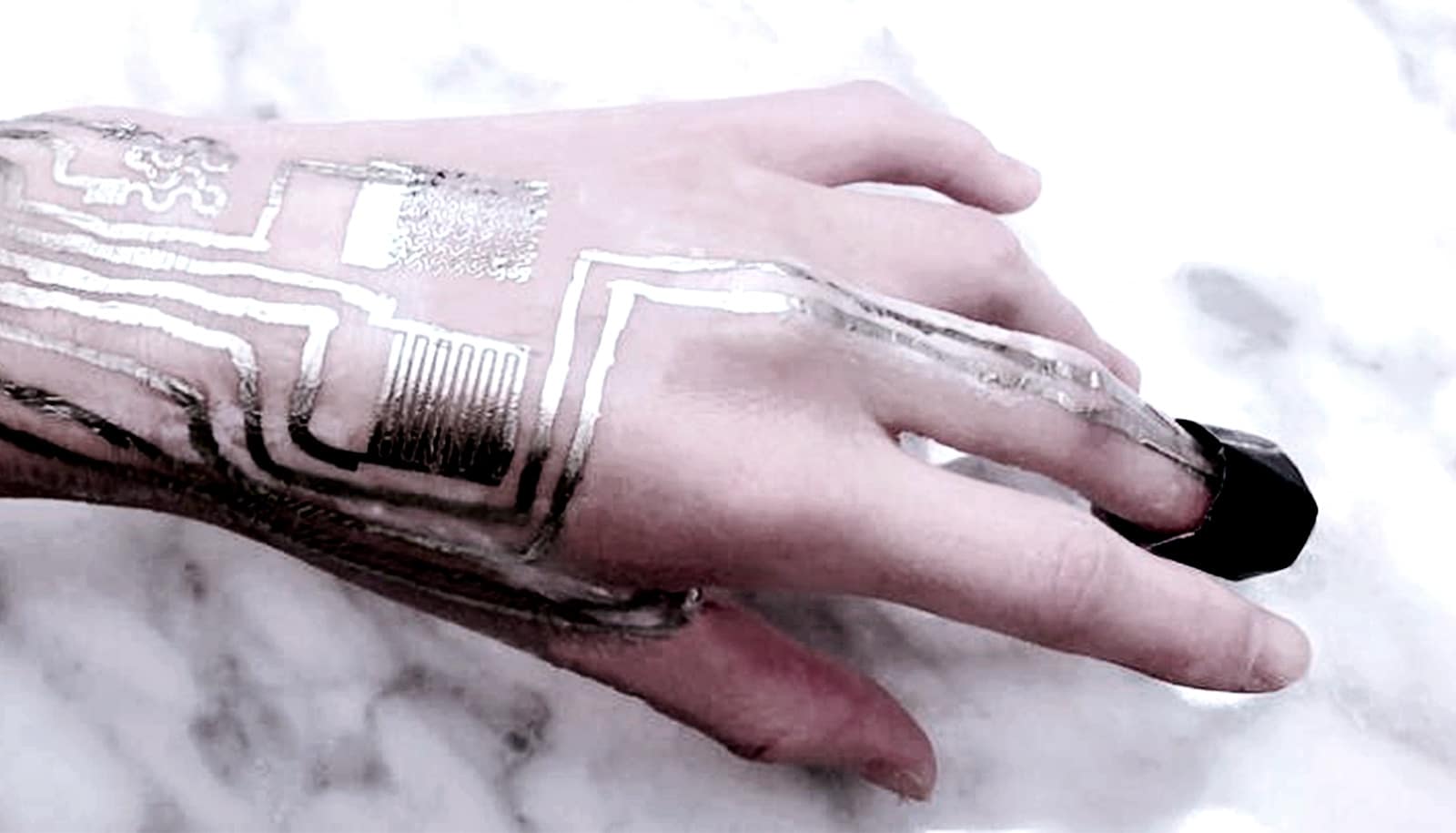An ultrasoft “skin-like” material that’s both breathable and stretchable could be used in the development of an on-skin, wearable bioelectronic device for health monitoring.
Cancer, diabetes, and heart disease are among the leading causes of disability and death in the United States. a long-term, in-home health monitoring solution could detect these chronic diseases early and lead to timely interventions.
The new material could pave way for devices that track multiple vital signs such as blood pressure, electrical heart activity, and skin hydration.
“Our overall goal is to help improve the long-term biocompatibility and the long-lasting accuracy of wearable bioelectronics through the innovation of this fundamental porous material which has many novel properties,” says Zheng Yan, an assistant professor in the chemical and biomedical engineering department and the mechanical and aerospace engineering department at the University of Missouri.
Made from a liquid-metal elastomer composite, the material’s key feature is its skin-like soft properties.
“It is ultrasoft and ultra-stretchable, so when the device is worn on the human body, it will be mechanically imperceptible to the user,” Yan says. “You cannot feel it, and you will likely forget about it. This is because people can feel about 20 kilopascals or more of pressure when something is stretched on their skin, and this material creates less pressure than that.”
Its integrated antibacterial and antiviral properties can also help prevent harmful pathogens from forming on the surface of the skin underneath the device during extended use.
“We call it a mechanical and electrical decoupling, so when the material is stretched, there is only a small change in the electrical performance during human motion, and the device can still record high-quality biological signals from the human body,” Yan says.
While other researchers have worked on similar designs for liquid-metal elastomer composites, Yan says the University of Missouri team has a novel approach because the breathable “porous” material they developed can prevent the liquid metal from leaking out when the material is stretched as the human body moves.
The work builds on the team’s existing proof of concept, as demonstrated by their previous work including a heart monitor currently under development. In the future, Yan hopes the biological data gathered by the device could be wirelessly transmitted to smartphone or similar electronics for future sharing with medical professionals.
The research, which appears in the journal Science Advances, received support from the National Science Foundation, the Office of Naval Research, the National Institute of General Medical Sciences, the National Institute of Arthritis and Musculoskeletal and Skin Diseases, and the Air Force Office of Scientific Research.
The content is solely the responsibility of the authors and does not necessarily represent the official views of the funding agencies.
Source: University of Missouri



